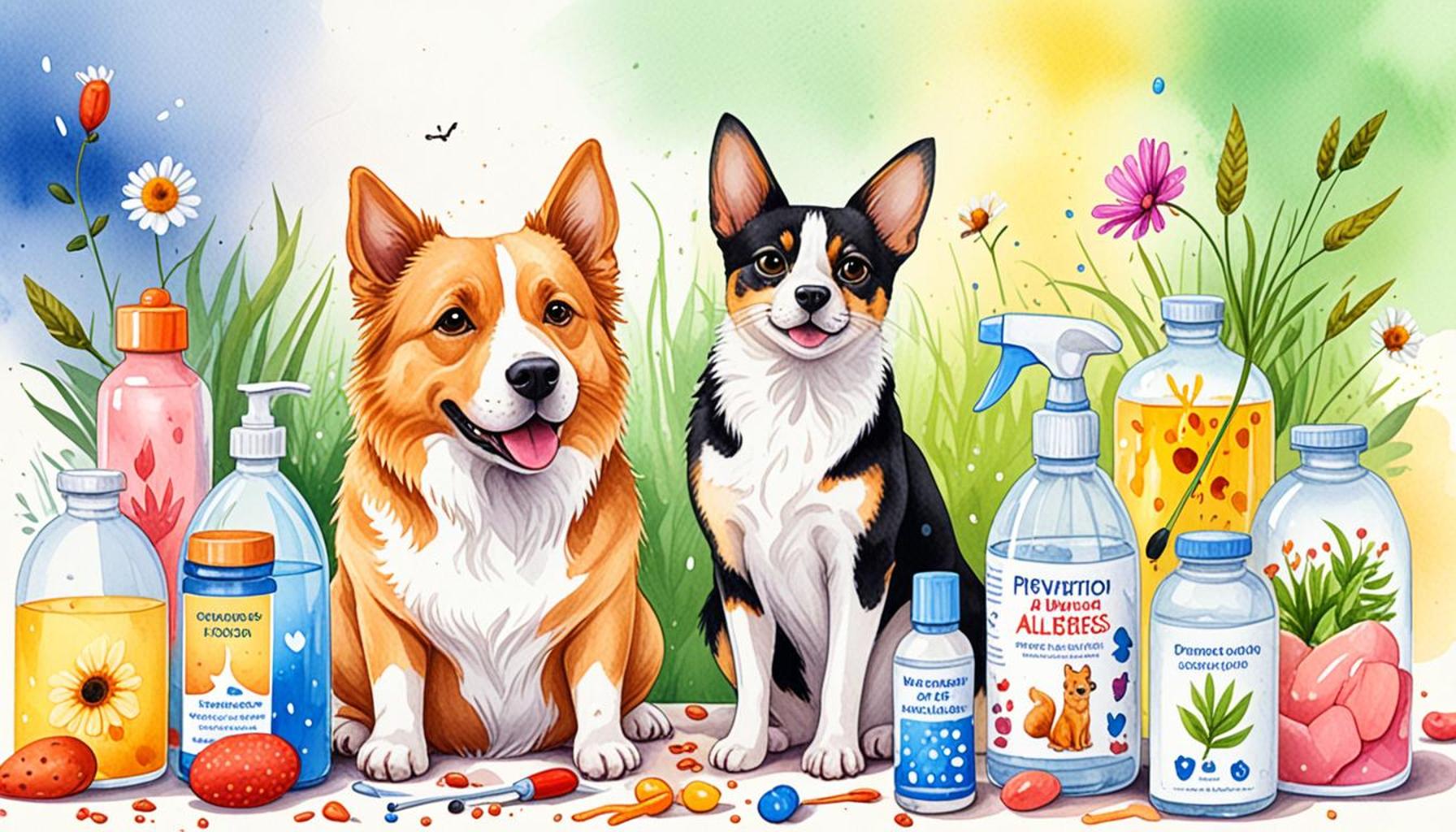Effects of Aging on the Physical and Mental Health of Pets

Understanding the Aging Process in Pets
Aging is an inevitable journey that significantly affects our beloved pets. As they progress through the various stages of their lives, both physical and mental transformations can manifest, presenting a unique set of challenges for pet owners. The earlier we recognize the signs of aging, the better equipped we are to ensure a fulfilling and happy life for our furry companions. Understanding these changes can substantially impact their quality of life as they enter their golden years.
Physical Health Changes
As pets age, their bodies undergo various transformations that can affect their mobility and overall health. Some of the most significant changes include:
- Decreased mobility – One of the most common issues faced by older pets is arthritis, which can lead to persistent joint pain. This discomfort often limits how much they can move around, affecting their ability to run, jump, or even walk comfortably. Pet owners might notice their furry friends hesitating to climb stairs or struggle to rise from resting positions.
- Weight fluctuations – A pet’s metabolism changes with age, which can contribute to weight gain or loss. Obesity can lead to additional health complications, such as diabetes and heart disease, making it essential to monitor their diet closely. Conversely, unexplained weight loss could signal illness and warrants immediate veterinary attention.
- Dental issues – Aging pets frequently suffer from dental diseases that can impact their oral health. Conditions such as periodontal disease can cause pain, making it difficult for them to eat properly. Beyond affecting their nutrition, poor dental health can also lead to behavioral changes, as they may become less social due to discomfort.
Mental Health Considerations
The mental health of aging pets is equally critical and deserves our attention. As their bodies change, many pets also experience psychological shifts that can be challenging to navigate:
- Cognitive Dysfunction Syndrome (CDS) – Much like dementia in humans, pets with CDS may exhibit signs of confusion, disorientation, and memory loss. This syndrome can manifest as alterations in sleeping patterns, increased anxiety, or difficulty recognizing familiar people and places.
- Separation anxiety – Older pets often become more attached to their owners, leading to heightened anxiety when separated. This attachment can result in behaviors such as excessive barking, destruction of property, or attempts to escape, causing distress for both the pet and the owner.
- Changes in behavior – As they age, pets may exhibit behavioral changes that can be concerning. Increased aggression or signs of withdrawal may indicate emotional distress or pain, highlighting the need for companionship, comfort, and understanding from their human caregivers.
Recognizing the effects of aging on the physical and mental health of pets enables pet owners to offer tailored support and care. It is crucial to adapt lifestyles, diets, and environments to meet the evolving needs of our aging companions. Regular veterinary check-ups and open communication with professionals can provide the best strategies to enhance their well-being. With proactive care and attention, we can ensure that our pets enjoy a life filled with comfort, joy, and companionship during their later years.
DIVE DEEPER: Click here to learn more

Impact of Aging on Pet Health: Physical and Mental Dimensions
As pets age, the physical changes they experience can be profound and multifaceted. Not only does their body become more susceptible to various health challenges, but their mental acuity may also decline, leading to a host of emotional and behavioral issues. These transformations can resound in the lives of both pets and their owners, making it essential to recognize and address them as early as possible.
Physical Health Changes in Aging Pets
The transition into seniority reveals a spectrum of physical challenges for pets. Recognizing these issues not only prepares pet owners for future care but also aids in extending their pet’s quality of life. Some key considerations include:
- Joint and Mobility Issues – One of the most prevalent problems in aging pets is the onset of arthritis or joint pain. This often results in decreased mobility, making it difficult for them to engage in activities they once loved, like playing fetch or going for long walks. Pet owners may notice their companions exhibiting hesitancy or reluctance to engage in physical activity, which is a signal to reassess their exercise and pain management strategies.
- Changes in Skin and Coat – Aging also affects the fur and skin of cats and dogs, as older pets often develop a dull coat and may experience hair loss. Skin sensitivity increases, possibly leading to conditions such as dermatitis. Regular grooming and appropriate skin care products become crucial in maintaining their comfort during this transition.
- Digestive Health – An older pet’s digestive system may slow down, leading to constipation or other gastrointestinal issues. Observations of altered bowel habits should prompt a review of their diet. Adding fiber or switching to a senior-specific food can help ease digestive discomfort.
- Vision and Hearing Loss – Pets may also suffer from sensory decline. Developments such as cataracts can cloud their vision, while auditory degenerations can cause hearing loss. Such impairments can influence their behavior and response to their environment, requiring enhanced communication methods between pets and owners.
Mental Health Implications of Aging
The effects of aging are not confined to the body; mental health also plays a critical role in the health of aging pets. Notable aspects to consider include:
- Cognitive Decline – Aging pets may develop conditions akin to Cognitive Dysfunction Syndrome (CDS), which parallels dementia in humans. Signs can include disorientation, disrupted sleep patterns, and a lack of interest in previously enjoyed activities. Elevating their environment, introducing interactive toys, and maintaining a consistent routine can assist in managing these symptoms.
- Anxiety and Behavioral Issues – The aging process can provoke separation anxiety in aging pets, as they often cling more tightly to their human companions. This attachment can lead to distress and heightened anxiety when left alone, possibly manifesting in destructive behaviors or vocalizations. Regular exercise and mental stimulation can help mitigate these feelings and ease anxiety.
- Socialization Changes – Behavioral shifts as pets age – whether increased irritability or reclusiveness – can stem from deteriorating physical condition or emotional distress. Staying attuned to these changes is essential, as proper companionship and regular socialization can significantly enhance their emotional well-being.
Understanding the effects of aging on the physical and mental health of pets empowers owners to provide proactive support. By tailoring care methods to an aging pet’s unique needs, pet owners can experience profound improvements in overall quality of life for their furry friends during these challenging years. Regular veterinary check-ups promote early detection and treatment of age-related issues, allowing for a more vibrant and fulfilled golden years for our beloved companions.
Effects of Aging on the Physical and Mental Health of Pets
As pets age, their physical and mental health may undergo significant transformations, often leading to a variety of challenges for both them and their owners. Understanding these effects allows pet owners to provide better care and enhance their pet’s quality of life.
| Physical Health | Mental Health |
|---|---|
| Decreased Mobility | Increased Anxiety |
| As pets get older, joint pain and muscle weakening can lead to difficulties in mobility, making routine activities challenging. | Aging pets may experience changes in their behavior, including heightened anxiety levels that can result from cognitive decline. |
| Dental Problems | Memory Loss |
| Older pets are at a greater risk of periodontal disease, impacting their overall health and potentially leading to pain and discomfort. | Like humans, pets may experience cognitive dysfunction syndrome, leading to confusion and forgetfulness which can affect their relationship with their owners. |
By recognizing these common issues associated with aging pets, owners can seek preventive measures or treatment options to help manage their furry companions’ physical and mental health. Up-to-date veterinary care, proper nutrition, and mental stimulation are essential for improving the well-being of aging pets.
DIVE DEEPER: Click here to discover more
Adapting Care for Aging Pets: Promoting a Better Quality of Life
As our beloved pets transition into their senior years, adapting their care to meet both their physical and mental health needs becomes vital. Recognizing the signs of aging and proactively managing these changes can help enhance their comfort and happiness. In this section, we will delve deeper into practical strategies that pet owners can implement to support their aging companions.
Preventative Care and Regular Health Check-ups
One of the most effective ways to address the effects of aging on the physical and mental health of pets is through preventative care. Regular veterinary visits are crucial for early detection of age-related conditions. Vets can perform comprehensive health screens, including blood tests, to monitor liver and kidney function, hormone levels, and other critical indicators. This proactive approach enables timely interventions that can significantly improve the quality of life for aging pets.
Dietary Adjustments
Nutrition plays a key role in managing the aging process. An appropriate diet helps to combat common issues like obesity, which can exacerbate joint pain and decrease mobility. Senior pet foods are often formulated with lower calories, and added fiber to support digestive health, and enriched with essential fatty acids for skin and coat health. Consultation with a veterinarian can help determine the best dietary approach tailored to a pet’s specific needs, ensuring that they receive optimal nutrition as they age.
Exercise and Physical Therapy
While joint and mobility issues may limit physical activity, it is crucial to encourage gentle exercise to maintain strength and flexibility. Low-impact activities, like brisk walks or swimming, can provide physical benefits without stressing the joints. Additionally, incorporating physical therapy techniques—such as massage or hydrotherapy—can enhance mobility and reduce discomfort, ultimately contributing positively to your pet’s mental health. Just as humans experience physical therapy, pets can also find relief and stability through similar treatments.
Cognitive and Behavioral Enrichment
To address cognitive decline effectively, mental stimulation is instrumental. Engaging activities such as puzzle feeders, hiding treats, or teaching new commands not only encourage mental engagement but also foster a strong bond between pets and owners. Providing safe spaces and enrichment varieties—like rotating toys or changing the environment—can help maintain a sense of curiosity and purpose in your pet’s life.
Creating a Comforting Environment
As pets age, their needs for comfort often change. Establishing a calm and supportive environment is essential. Provide soft bedding, ensure easy access to food and water, and minimize unfamiliar stimuli that could provoke anxiety. For instance, if a pet shows signs of increased anxiety during thunderstorms or fireworks, using calming products or creating a designated safe space can help ease their distress, allowing them to feel secure.
Moreover, social interactions should not be overlooked. Ensuring that aging pets have regular interactions with family members and other animals can help combat loneliness and provide much-needed companionship. Structured playdates or visits with familiar friends can maintain their social skills and enhance their overall emotional well-being.
Implementing these thoughtful strategies can significantly influence the effects of aging on the physical and mental health of pets. By understanding their unique needs and making necessary adjustments, pet owners can enhance the quality of life for their furry companions, ultimately leading to a more rewarding and fulfilling aging experience for both pets and their families.
DIVE DEEPER: Click here for essential tips on choosing the best cat food
Conclusion: Embracing the Journey of Aging Pets
In conclusion, understanding the effects of aging on the physical and mental health of pets is essential for creating a supportive environment that enhances their well-being. As our furry friends grow older, they become more vulnerable to various health issues, ranging from mobility challenges to cognitive decline. By recognizing these changes and implementing proactive measures, pet owners can make a significant difference in their companions’ quality of life.
Regular veterinary check-ups are vital for early detection and management of age-related conditions, while tailored nutritional plans can address their specific needs. Gentle exercise and physical therapy can maintain mobility and comfort, while enriching activities stimulate their minds and help combat the common challenges of aging.
Moreover, creating a comforting home environment and fostering social interactions can alleviate feelings of anxiety and isolation that often accompany aging. These multifaceted approaches emphasize that aging doesn’t have to diminish the joy our pets bring to our lives. Instead, with thoughtful care and attention, we can enhance their golden years, ensuring they remain happy and engaged.
As more studies emerge regarding the effects of aging on pets, it is crucial for pet owners to stay informed. Investing time in understanding the needs of aging pets not only enhances their lives but also deepens the bond between pets and their families. Embracing this journey together offers a fulfilling experience, particularly as we navigate the beautiful yet challenging stages of our beloved companions’ lives.



